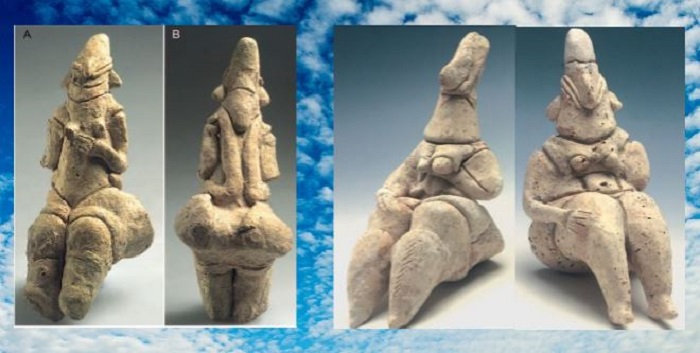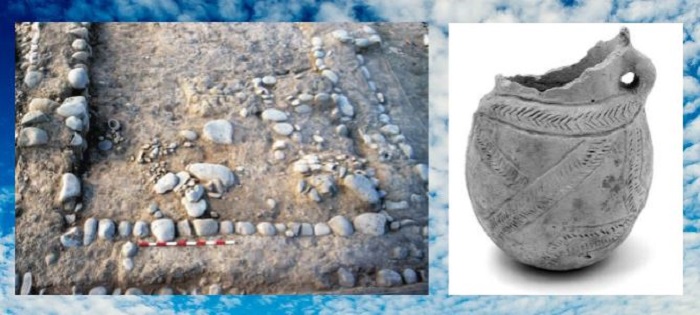What an 8,000-year-old statue of the Goddess Mother found in Israel told archaeologists
During excavations at the Shaar HaGolan archaeological site in the Jordan Valley, archaeologists discovered a cult figurine that is 8,000 years old. The figurine depicts a pagan ancestor mother and belongs to the ancient Yarmoukian culture. The Yarmoukian people lived in this area before the Israelites and the Palestinians, before the Romans and the Greeks and before the Kingdom of Judah. Their culture belongs to the Neolithic period and is considered the first prehistoric culture that existed in what is now Israel.
What was the Pagan Mother Goddess
The Yarmouk culture existed between 6400 and 5800 B.C. The Yarmoukians were at the stage of humanity’s transition from a gathering culture to permanent settlement.
They were engaged in agriculture, growing wheat and barley and raising livestock, as well as crafts, making pottery. Their jugs, bowls, bowls, plates were characterized by a very distinctive herringbone pattern, as well as horizontal, vertical and diagonal lines, which the ancient masters usually painted in red.
Statuettes of the Mother Goddess are also a distinctive feature of this culture. As in some other pagan beliefs, such a figurine symbolized fertility among the people who lived here in ancient times. The Yarmoukian people believed that the mother ancestor was able to send them abundance and facilitate the birth of healthy, strong offspring.
Assembled from two parts
The excavations were conducted in the kibbutz Shaar Hagolan (this is the largest Yarmuk monument and may have been the center of the ancient settlement), near the Yarmuk River, which gave its name to the ancient culture. The found figurine is a schematically depicted woman. The statuette is made of clay, the size of the artifact is 20 centimeters. The woman is depicted in a sitting pose. Found her near the wall of the house, and not entirely, and split into two parts.
Co-director of the excavations Shaar Hagolan Dr. Julien Vieg from the French Research Center, with whom the excavations were conducted, confirmed to reporters that the artifact belongs to the Yarmuk culture.
The bottom of the statuette is painted red, which in the ancient Yarmuk culture also symbolized fertility. Interestingly, archaeologists found a stone with carved eyes and mouth next to the figurine of the woman-mother.
Archaeologists have found similar statuettes of the Mother Goddess before, but the one found now is one of the largest.
The woman has wide hips, a pointed hat, dark eyes and a large nose. One of her hands rests on her hip and the other under her breast.
As one of the leaders of the archaeological work, Anna Eirich-Rose, explains, every small detail of this pagan figurine has a certain meaning in the Yarmuk culture and is symbolic. The process of creating such a figurine is very complex. It involves a special procedure of wrapping and layering clay around a core-shaped center.
Giant settlement keeps many secrets
The Shaar Hagolan site, excavated in the middle of the last century, was identified as belonging to the Jarmuk culture by Hebrew University professor Moshe Stekelis.
The last excavations were conducted here in the early 2000s and were completed in 2004. Then they were able to clear an area of about 3 thousand square meters and found about 1 million stone artifacts, 90 thousand fragments of pottery and fifty thousand animal bones. Also during the excavations were found a total of more than a hundred figures made of clay.
The current excavations on this site were started next to the previous ones. Their goal is to clear out layer after layer to reach the Neolithic pre-ceramic level in order to investigate the ancient culture and production of pottery (this was the first culture to produce such utensils on an «industrial» scale, not as single pieces).
The discovery of this figurine will help scientists learn even more about the ancient culture. First, samples of the material from which it was made will be examined, on the basis of which scientists will draw conclusions about the composition of the pottery of that time. Second, in further investigation of this and other found statuettes of the Mother Goddess, scientists will try to determine whether this image was used only in the cult practices of the ancient Yarmukians or whether it was part of a well-established religion.
There are many mysteries in the land of Israel. For example, people are trying to understand where the mysterious craters of the Dead Sea come from. Some believe these recent mysterious sinkholes are a miracle of nature, while others warn of environmental catastrophe.



